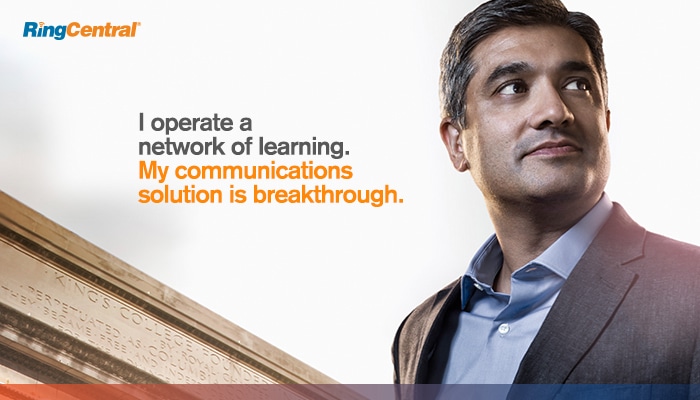At a glance:
- What is hybrid learning?
- What is blended learning?
- Why does the difference between hybrid learning and blended learning matter?
- What capabilities should your hybrid learning platform have?
👩🏫 💻 📚 How does hybrid learning facilitate the future of higher education? Grab our eBook to find out.
As institutions of higher learning now offer virtual learning options, new terminology has cropped up. People are talking about hybrid learning and blended learning. What do these terms mean, and is there a difference between the two?
Here, we’ll explore the difference between hybrid learning and blended learning with examples for each.
What is hybrid learning?
“Hybrid learning” refers to a situation in which students attend class in-person or virtually at the same time. It incorporates synchronous and asynchronous learning activities.
Synchronous learning means that the students are in class while learning (either physically or virtually), while asynchronous learning activities are those that take place when the student isn’t in a classroom. Asynchronous learning materials are available for students any time they want to use them; teachers generally post them to a virtual learning platform for ease of access.
What does hybrid learning look like in practice?
Here’s an example to illustrate what hybrid learning might look like.
Melissa and Olivia are university students enrolled in a world literature class; Melissa lives on campus and attends classes in person, while Olivia is a virtual student. When class starts, Olivia logs into the virtual learning platform and attends the lecture.
One day, Melissa isn’t able to make the class. Her professor always records the lecture and uploads it to the virtual learning platform so students can access it if they weren’t able to attend class. In addition, the professor also uploads other resources, such as videos about the authors the students are reading and articles about the books.
What is blended learning?
Blended learning is, as the name implies, a blend of in-class learning and online materials and activities. Many classes at higher education institutions demonstrate blended learning in action.
What’s important to note is that blended learning isn’t about replacing in-class learning with online activities and materials; rather, it’s about supplementing and building upon what students learn in class.
What does blended learning look like in practice?
Here’s an example to illustrate blended learning in practice:
Mark is a student at a college. He’s enrolled in a geology course, with lectures twice a week. The lectures are held in-person, with no option to attend virtually.
The professor uses a virtual learning platform. He posts articles and videos about the material students are learning. This material is available whenever students want, so they can use it to study and for research.
Why does the difference between hybrid learning and blended learning matter?
With all this in mind, why does the difference between hybrid learning and blended learning matter?

There are some similarities between hybrid learning and blended learning: both methods use technology to support and supplement learning. However, there are also differences. Blended learning doesn’t allow students to attend classes virtually; they have to be in class to learn from the instructor. Hybrid learning, on the other hand, allows for asynchronous learning from the instructor
| Hybrid Learning | Blended Learning | |
| Learning asynchronously | Yes | No |
| In-class learning | Yes | Yes |
| Supported a virtual learning platform | Yes | Yes |
| Supplemental materials available for students at any time | Yes | Yes |
As the chart shows, the biggest similarity between hybrid learning and blended learning is the use of technology. Both of these learning methodologies rely upon virtual learning platforms to help students learn.
However, there’s a major difference between the two methodologies, and that is the lack of asynchronous learning within blended learning. Students are expected to attend class to learn. The professor doesn’t record lectures and post them later, in case students can’t make a class or need to learn virtually.
Hybrid learning: the future of education?
You could say that blended learning represented the current state of higher education. Students would go to class and the instructor would post supplementary materials in a virtual learning platform.
That changed in the early part of 2020, as a global healthcare crisis forced higher education institutions across the globe to shift to virtual learning. Suddenly, in-class learning wasn’t possible; it posed a health risk.
Hybrid learning offers a way for students to continue to learn safely. Virtual learning platforms allow instructors to record their lectures, then post them afterward so students can watch them. Students don’t have to feel as though they missed out on anything just because they can’t be in the classroom.
What capabilities should your hybrid learning platform have?
To accommodate students’ needs and abide by local health restrictions, higher education institutions are increasingly looking at hybrid learning platforms. What capabilities should a hybrid learning platform have?
- Video conferencing, screen sharing, and live chat to drive engagement
- Integration with learning management tools
- Ease of use on any device
Video conferencing, screen sharing, and live chat to drive engagement
Being able to record lectures is a must-have feature for hybrid learning platforms, but there are two other features that are crucial: screen sharing and live chat.
Screen sharing allows instructors to share pertinent material, while live chat enables students to answer questions and make comments, so they’re engaged with what they’re learning.
Integration with learning management tools
Hybrid learning platforms must also integrate with learning management tools such as Canvas. This integration allows instructors to post their lectures as well as supplementary materials to aid student learning.
Ease of use on any device
Today’s students want to learn on the device of their choice. That might be a smartphone, tablet, or desktop.
A hybrid learning platform should be easy to use on any device the student chooses. It should facilitate learning as well as participation in the virtual classroom, even if a student is learning asynchronously.

Put hybrid learning into place with RingCentral’s virtual learning platform
RingCentral’s virtual learning platform is used by institutions of higher education everywhere. With the hybrid learning platform, instructors can hold live lectures and record them for later use. Students can engage with lessons through live chat, and integration with learning management solutions allow them to access supplementary resources. To learn more, request a demo.
Originally published Mar 08, 2021, updated Dec 16, 2022





